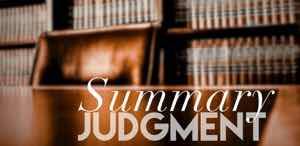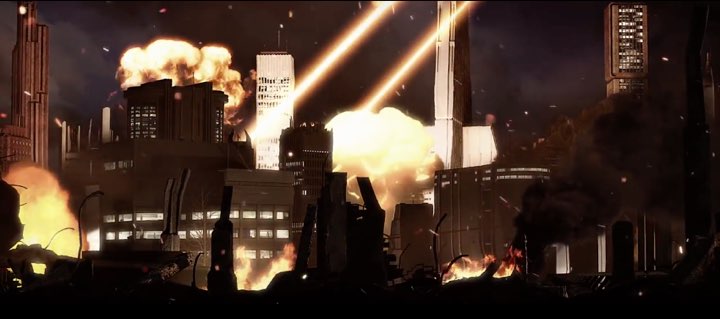Axanar Wants Summary Judgment, Says Studios ’Squashing Creativity’
Table of Contents
See also: Plaintiffs Cite Peters' Shocking Personal Spending in Asking Judge for Summary Judgment and Explaining Summary Judgment
In their own motion for summary judgment, also filed November 16, 2016, attorneys for Axanar producer Alec Peters produced evidence to support their longtime contentions that:
- The copyright lawsuit brought by Star Trek’s owners, CBS and Paramount Pictures, is premature since Axanar has yet to be produced and is a “non-commercial film project.”
- None of Axanar’s works are “substantially similar” to Star Trek.

Squashing Creativity
Winston & Strawn attorney Erin Ranahan portrayed the case as an attempt by two large corporations to “squash the very creativity that copyright law was designed to protect” by suing “one of Star Trek’s biggest fans, individual Alec Peters, and his small company, Axanar Productions Inc.”2)
Plaintiffs' Legal Failure
Ranahan’s motion focused on three ways in which the studios’ claims fail as a matter of law.
'Premature' Claim
The defendants’ motion repeated an assertion made in the defense’s Motions to Dismiss, which was rejected months before by U.S. District Court Judge R. Gary Klausner, who will be the one ruling on the summary judgment motion and overseeing the trial if summary judgment fails to be granted.
'Many Scripts'
The defense claimed that because Axanar remained unproduced it shouldn’t be liable for copyright infringement. Judge Klausner didn’t buy that argument back in May:
Because Plaintiffs have sufficiently alleged Defendants created the Vulcan Scene as well as a “final and locked script,” the Court finds that Plaintiffs’ claims based on the Axanar Motion Picture are ripe for adjudication.3)
Rewrites Address Judge's Concern
Ranahan answered that line of thinking by emphasizing the Axanar screenplay wasn’t truly “locked,” which she described as merely a “term of art meaning that no new sets, scenes or characters will be added to a script, and is used to aid in budgeting purposes.”
Hence the new motion’s emphasis on how “unlocked” the script had become since the judge’s decision:
Many scripts have been created since the unfinished August 2015 script, all using varying degrees of the Star Trek universe. … Defendants are not currently committed to using any of the existing scripts in the Potential Fan Film, and have not decided what format, length and substance the Potential Fan Film will take, though they are considering making more mockumentary style works [like Prelude to Axanar].4)
Ranahan went on to assert that the true fluid nature of Axanar‘s script made “consideration of substantial similarity and fair use analyses … impossible.”5)
Substantial Similarity
The defense motion goes on to assert, “None of Defendants’ works are substantially similar to plaintiffs’ works.”6)
In the United States, the French term scènes à faire refers to certain elements of a creative work not protected by copyright law when they are mandated by or customary to the genre.
Ranahan argued for “filtering out” elements of Star Trek that are not protected by copyright, such as “the general mood and theme of science fiction; names and words used in Plaintiffs’ Works; elements in the public domain and nature; the Klingon language; Scènes à Faire; most specific characters; and the general costuming and appearance of, or shapes affiliated with [Star Trek] characters.”7)
That same argument was part of the defendants’ failed motion to dismiss the case months before, with the same judge. Back then, Klausner ruled:
When viewed in a vacuum, each of these elements may not individually be protectable by copyright. Plaintiffs, however, do not seek to enforce their copyright in each of these elements individually. … The Court finds it unnecessary to analyze whether the allegedly non-protectable elements of the Star Trek Copyrighted Works are eligible for copyright protection because Plaintiff describes these elements in the Complaint solely in an effort to demonstrate how the Axanar Works are substantially similar to the Star Trek Copyrighted Works.8)
As noted above, even performing the analysis cannot be done until the script is truly finalized, Ranahan claimed. That raised the question of whether CBS and Paramount had to purposefully allow infringement to occur — for which they’ve gathered a great deal of evidence — in order to be able to Peters for Axanar.
« None of Plaintiffs’ [Star Trek] works in this action are substantially similar to Defendants’ works. » — Axanar attorney Erin Ranahan
Fair Use
Like the plaintiff's motion for summary judgment, the defense also undertook analysis of the four factors to determine fair use.
Financial Harm
Ranahan lead the analysis with the claim Axanar posed no financial harm to Star Trek, and that was central to determining Axanar’s protection under fair use:
In assessing the market impact factor of the fair use analysis, courts have held that where “the allegedly infringing use does not substitute for the original and serves a ‘different market function,’ such factor weighs in favor of fair use.” Seltzer v. Green Day, Inc., 725 F.3d 1170, 1179 (9th Cir. 2013)9)
Purpose and Character of the Work.
Ranahan examined whether the Axanar’s works met the standards for non-commercial use and transformativeness — the idea that a work is no longer infringing when it transforms the original by giving it new meaning, saying something new, or its purpose comments or criticizes the original work.
The motion described Prelude as “inherently non-commercial” because it is offered for free on YouTube, and that there was no evidence the defendants stood to profit. Of course, in rejecting this same claim in the defendants’ motion to dismiss, Judge Klausner found:
Although it is unclear whether Defendants stand to earn a profit from the Axanar Works, realizing a profit is irrelevant to this analysis. The Court can easily infer that by raising $1 million to produce the Axanar Works and disseminating the Axanar Works on Youtube.com, the allegedly infringing material “acts as a ‘draw’ for customers” to watch Defendants’ films.10)
Indeed, the defense motion repeatedly used the word ‘profit,’ even while failing to address the judge’s finding the concept of profit was distinct from that of Peters’ and others’ direct financial benefit.
Transformative
Ranahan asserted that Prelude‘s short historical mockumentary style featuring first-person interview made it “especially unique and distinctive” from Star Trek, and allowed the defendants to “add critical commentary and analysis in order to highlight a comparison of concepts in the Star Trek universe to the present-day military industrial complex, thus serving a “completely different purpose than the solely entertainment-focused Plaintiffs’ Works.”11)
Dismissing Star Trek as “solely entertainment-focused” might come as a surprise to fans who have lauded the show for a half century for its famous social commentary. A Google search with the keywords “Star Trek social commentary” yields more than 759.000 results.
Nature of the Copyright Work
On this final factor, the defense asserted that since Axanar’s works were non-commercial and transformative. Therefore, the fact that Star Trek is a creative work that under copyright law should be “less likely to support a claim of a fair use”12) is “not particularly important.”13)
Timetable for Motion

THIS TIMELINE lays out the events regarding motions for summary judgment both sides submitted to U.S. District Court on November 16. Click the image to view full size. 
Keywords

